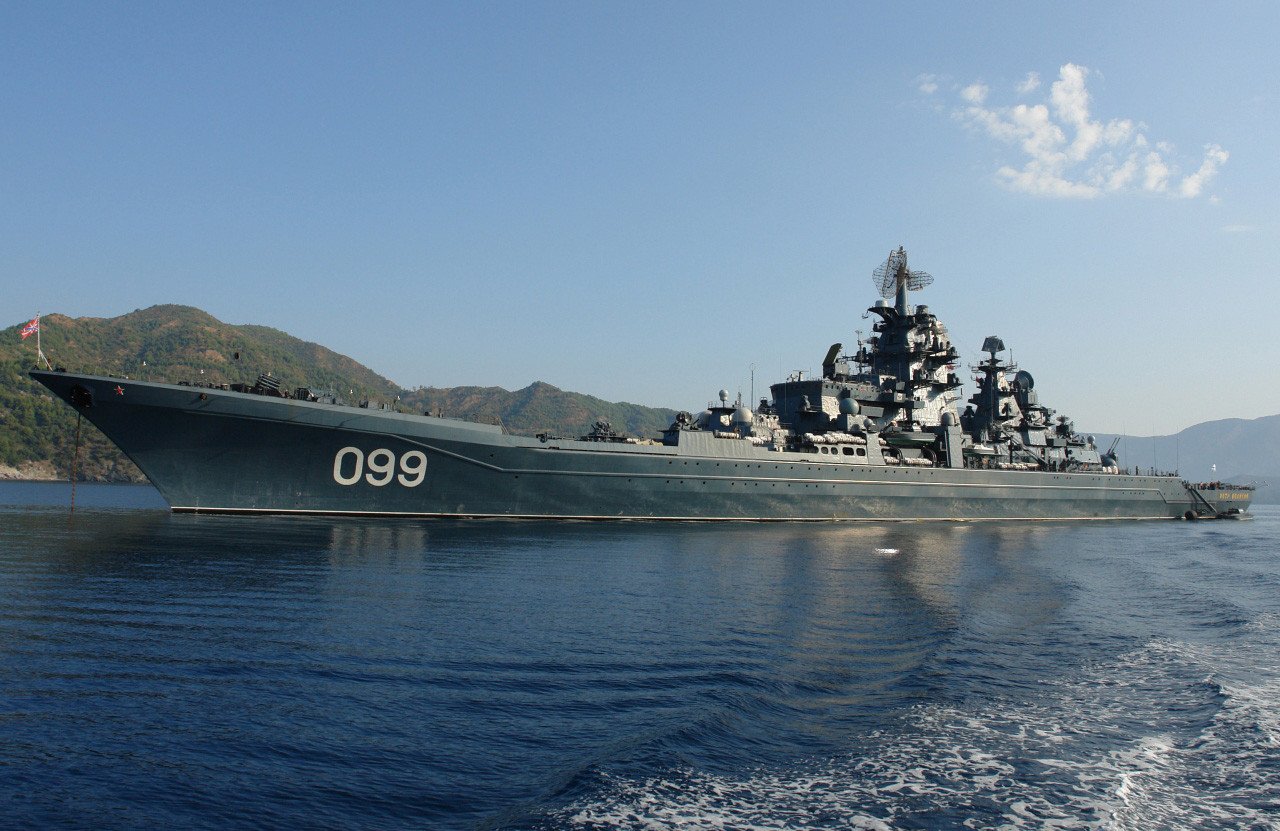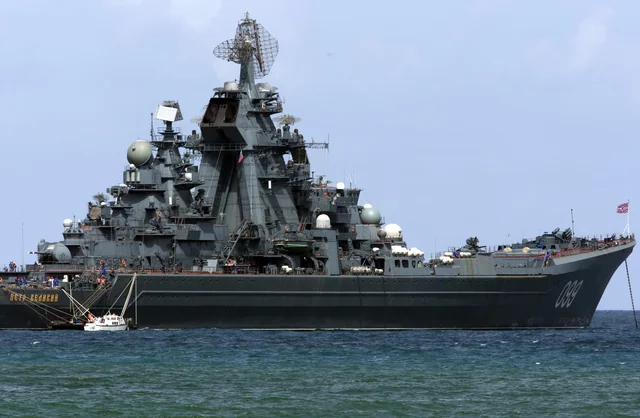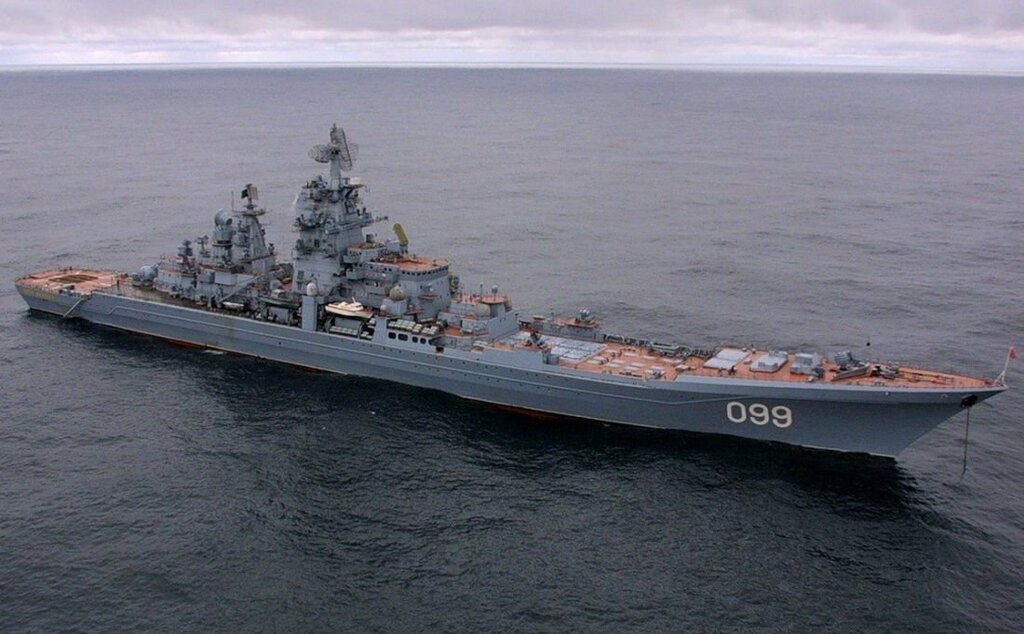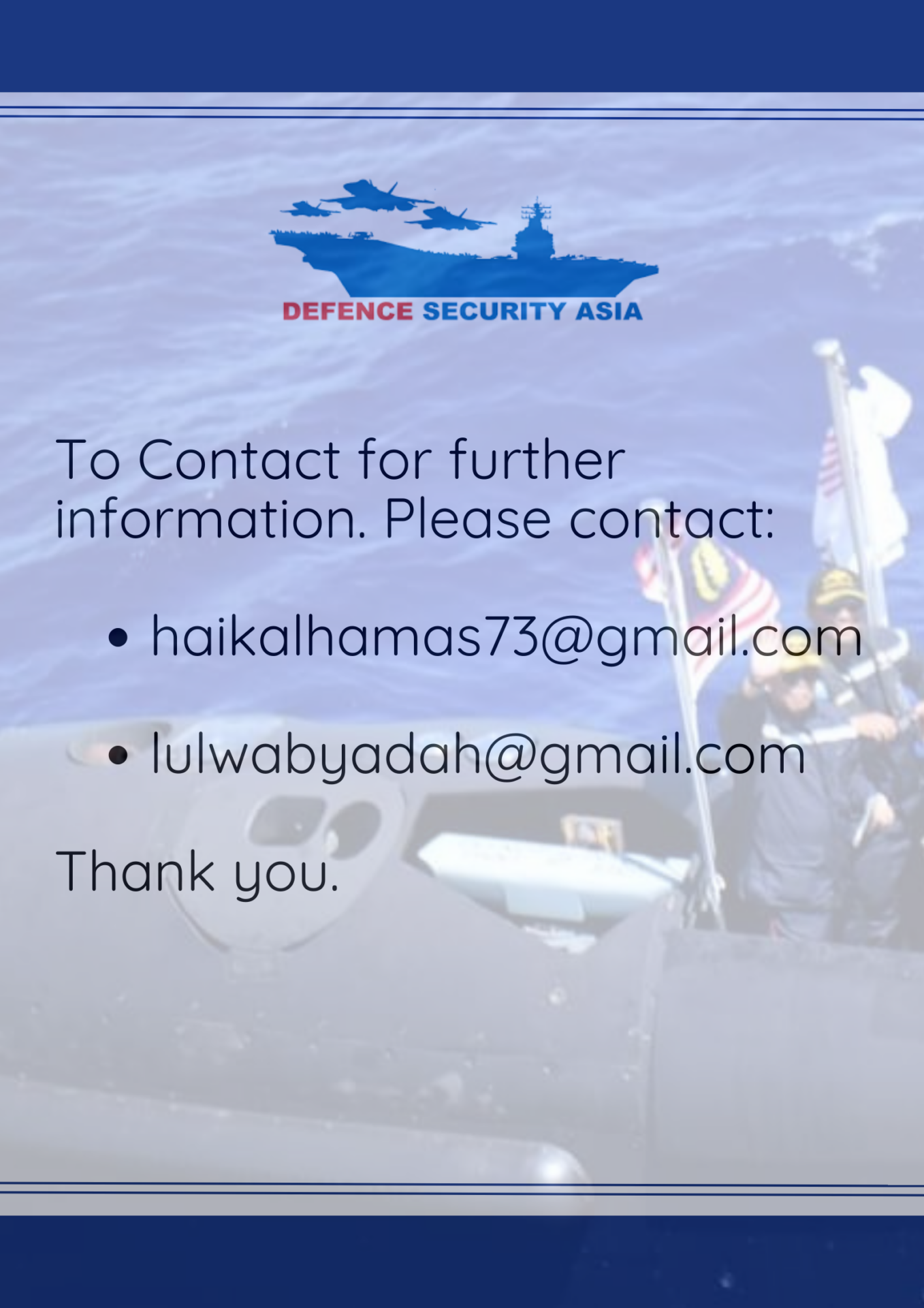Cold War Giant Falls Silent: Russia Prepares to Retire Its Last Nuclear Battlecruiser, Pyotr Veliky
The Pyotr Veliky, a leviathan of the Cold War-era Kirov-class, displaces 28,000 tons—placing it in the same weight class as Japan’s JS Izumo and JS Kaga, two former helicopter destroyers currently being retrofitted into light aircraft carriers capable of launching F-35B stealth fighters.
(DEFENCE SECURITY ASIA) – In a significant shift that signals a recalibration of Russian naval priorities, Moscow has officially scrapped plans to modernize and upgrade the nuclear-powered battlecruiser Pyotr Veliky, once hailed by Russian authorities as “the most powerful surface warship in the world.”
The Pyotr Veliky, a leviathan of the Cold War-era Kirov-class, displaces 28,000 tons—placing it in the same weight class as Japan’s JS Izumo and JS Kaga, two former helicopter destroyers currently being retrofitted into light aircraft carriers capable of launching F-35B stealth fighters.
The cancellation marks the end of an era for one of the most iconic symbols of Russian sea power, a vessel originally conceived to confront American carrier strike groups during the height of superpower rivalry.
With Pyotr Veliky now poised for decommissioning, the Russian Navy’s Kirov-class fleet will be reduced to a single operational vessel—Admiral Nakhimov—which remains in drydock undergoing a decades-long, top-to-bottom modernization effort.
The Admiral Nakhimov, whose upgrade began as far back as 1999, is slated to rejoin the fleet between 2025 and 2026, following a series of exhaustive sea trials that will evaluate its combat readiness and integration of next-generation missile systems.
According to open-source defence analysts, the refit is expected to equip Admiral Nakhimov with vertical launch systems capable of firing Kalibr land-attack cruise missiles, P-800 Oniks supersonic anti-ship missiles, and potentially even the hypersonic 3M22 Tsirkon (Zircon), enhancing its strike reach and survivability in contested maritime theatres.
Once Admiral Nakhimov returns to active duty, Pyotr Veliky will be formally retired, with speculation suggesting the aging warship may be relocated to an undisclosed naval reserve facility or dismantling yard—ending its operational life quietly after decades as a potent symbol of Russian naval ambition.

At 28,000 tons, the Kirov-class battlecruisers are the largest surface combatants in the world, second only to aircraft carriers and amphibious assault ships, offering a formidable combination of firepower, endurance, and sensor range unmatched by most Western surface fleets.
Their deactivation, however, underscores the immense financial and logistical challenges of maintaining Cold War-era super-platforms in the face of modern, multi-domain warfare that increasingly emphasizes distributed lethality, unmanned systems, and integrated air and missile defence.
Russia’s decision may also reflect a strategic shift toward leaner, more survivable surface combatants and submarine forces, as well as the reallocation of naval resources to frontline operations in the Black Sea, Arctic, and Pacific theatres, where asymmetric maritime pressure remains a priority under Russia’s evolving naval doctrine.
The phasing out of Pyotr Veliky marks a symbolic turning point—not just for the Russian Navy—but for the very idea of Cold War naval supremacy anchored by heavily armed surface behemoths in an age rapidly moving toward network-centric warfare and unmanned dominance.
While Russia’s towering Pyotr Veliky battlecruiser boasts a staggering 28,000-ton displacement, far exceeding most contemporary surface combatants, the decision to retire it draws attention to a major pivot in global naval priorities.
By comparison, the U.S. Navy’s Arleigh Burke-class destroyers displace just over 7,000 tons, while the aging but still operational Ticonderoga-class cruisers register over 9,000 tons.

China’s latest blue-water behemoth, the Type 055 Renhai-class destroyer, sits at approximately 11,000–13,000 tons full load, making it one of the largest non-carrier warships in the world—but still dwarfed by the Cold War-era Kirov-class titans.
Constructed at the height of Soviet naval ambition, four Kirov-class nuclear-powered battlecruisers were built, with Pyotr Veliky being the last commissioned in 1989 and Admiral Nakhimov a year earlier in 1988.
Following the Soviet Union’s dissolution, a cash-strapped Russia abandoned two of these behemoths, leaving them to rust at anchor due to the astronomical cost of upkeep and operations.
That left only Pyotr Veliky and Admiral Nakhimov in active or serviceable condition, with the former serving as the flagship of Russia’s Northern Fleet for over two decades.
With the decision now made to decommission Pyotr Veliky, the Russian Navy’s operational Kirov-class fleet will be reduced to a single unit, Admiral Nakhimov, which has been undergoing a protracted modernization process since 1999.
This strategic reduction is consistent with Moscow’s broader shift away from Soviet-era capital ships that are increasingly viewed as logistical liabilities in the modern maritime battlefield.

Naval analysts interpret this move as a rational reallocation of resources, as the operational and maintenance costs of these nuclear leviathans consume funds that could modernize the fleet or expand Russia’s submarine capabilities.
Instead, Russia appears to be embracing a leaner naval doctrine, investing in modern guided-missile frigates such as the Admiral Gorshkov-class, corvettes like the Steregushchiy-class, and an expanding fleet of stealthy nuclear and conventional submarines.
According to strategic observers, the emphasis is now on speed, survivability, and long-range precision strikes—attributes better embodied by smaller, networked vessels armed with Tsirkon hypersonic missiles and Kalibr cruise weapons.
The Tsirkon, capable of reaching speeds of Mach 8–9, promises to penetrate existing naval missile defences, while the Kalibr family offers land-attack capabilities up to 2,500 kilometers, giving smaller Russian vessels a disproportionately large punch.
Though once a feared maritime juggernaut, Pyotr Veliky‘s utility has waned as modern naval warfare increasingly favors platforms with modularity, stealth signatures, and multi-domain operational flexibility.
Some analysts view its retirement as a potent symbol of Russia’s diminishing ability to project conventional naval power beyond its regional theatres, particularly in the Arctic and the contested Black Sea region.

Yet the legacy of the Kirov-class remains unmatched in terms of firepower and scale, a class of ships conceived to dominate oceans through saturation missile barrages and layered air defence umbrellas.
Technical Specifications – Pyotr Veliky:
Dimensions and Displacement:
The vessel measures 252 meters in length with a 28.5-meter beam and a 9.1-meter draft.
It displaces 24,300 tons standard and up to 28,000 tons at full load, making it the largest surface combatant afloat, apart from aircraft carriers and amphibious assault ships.
Propulsion System:
Powered by two KN-3 nuclear reactors and two GT3A-688 steam turbines generating 140,000 horsepower, Pyotr Veliky can reach speeds up to 32 knots (59 km/h).
Its operational range is virtually unlimited at cruising speeds thanks to nuclear propulsion, though it offers a 1,000 nautical mile range at 30 knots under combined propulsion.

Crew:
The warship houses 727 personnel, including 18 air crew and 15 senior command staff, enabling around-the-clock combat operations.
Sensors and Detection Systems:
Sensor suites include the Voskhod MR-800 “Top Pair” 3D radar, Fregat MR-710 “Top Plate,” Palm Frond navigation radar, and advanced sonar systems such as the Horse Jaw LF and Horse Tail VDS.
Armament:
Pyotr Veliky carries an immense arsenal including:
-
20 P-700 Granit (SS-N-19 “Shipwreck”) long-range anti-ship missiles
-
64 3K95 Kinzhal (SA-N-9 “Gauntlet”) surface-to-air missiles
-
48 S-300FM Fort-M (SA-N-20 “Gargoyle”) and 48 S-300F Fort (SA-N-6 “Grumble”) SAMs
-
2 RBU-1000 and 2 RBU-12000 anti-submarine rocket launchers
-
10 533 mm torpedo tubes capable of launching Type 53 torpedoes or SS-N-15 Starfish
-
6 Kashtan (CADS-N-1) close-in weapon systems (CIWS)
-
1 twin AK-130 130mm/L70 dual-purpose naval gun



